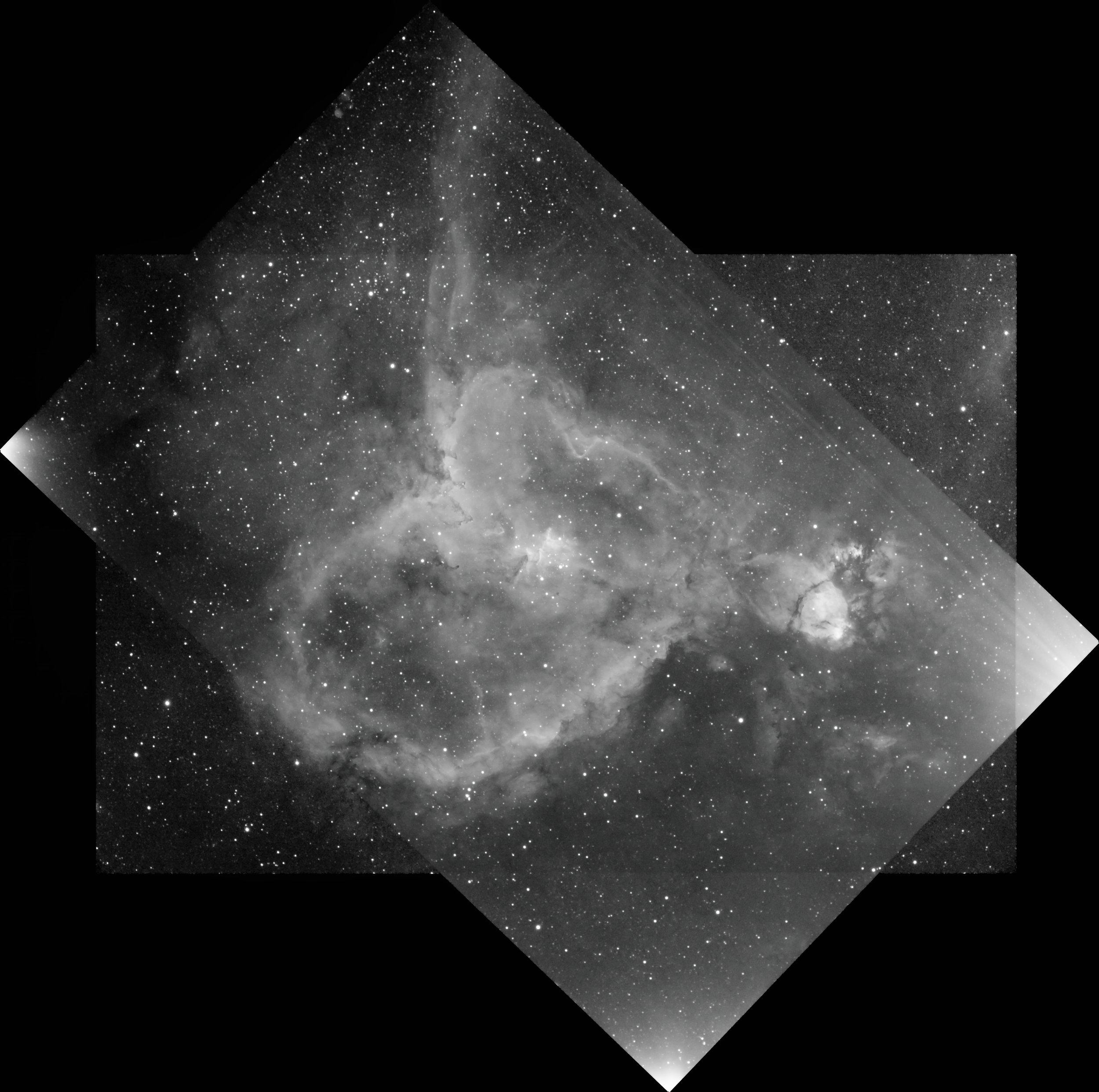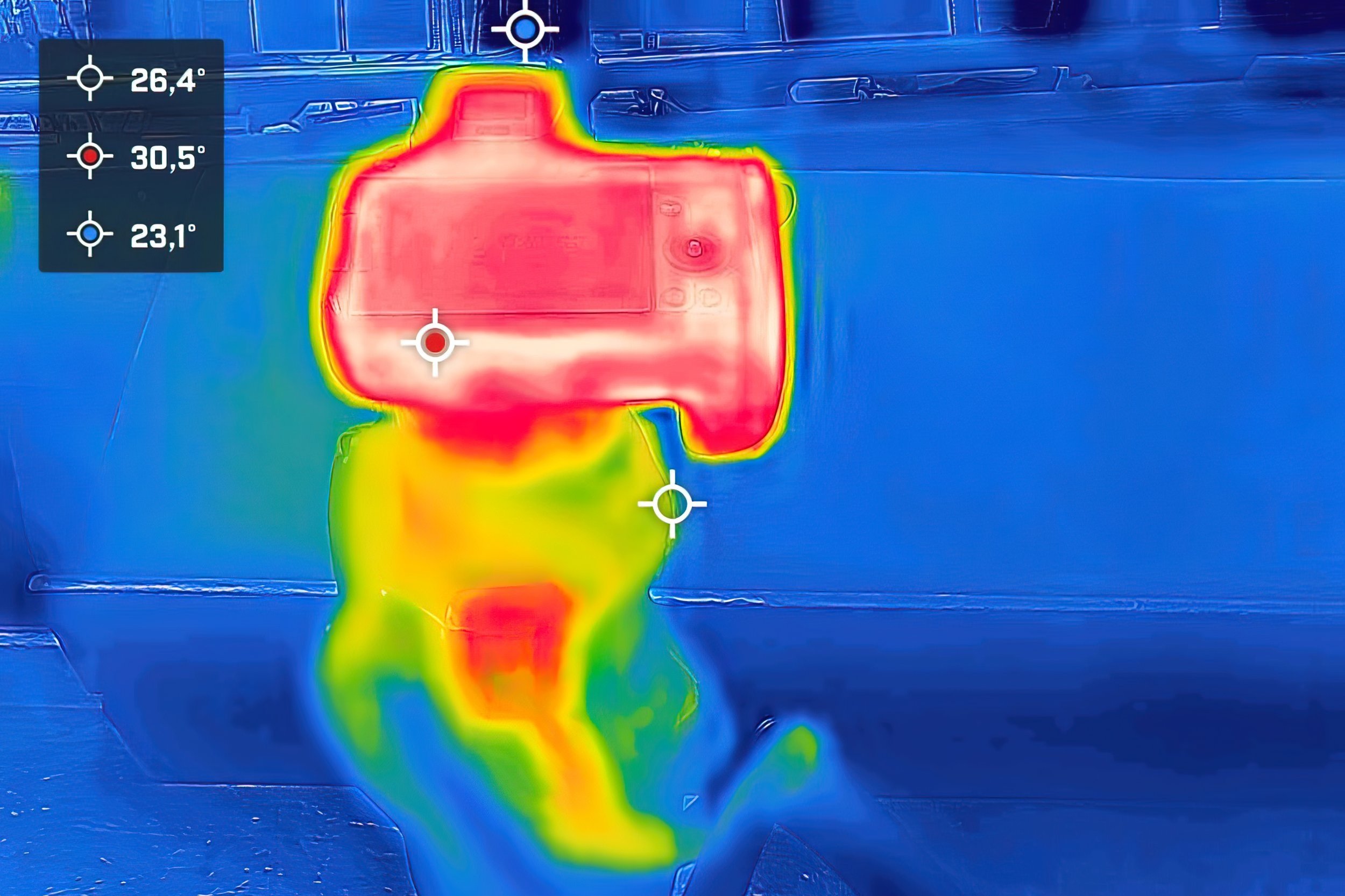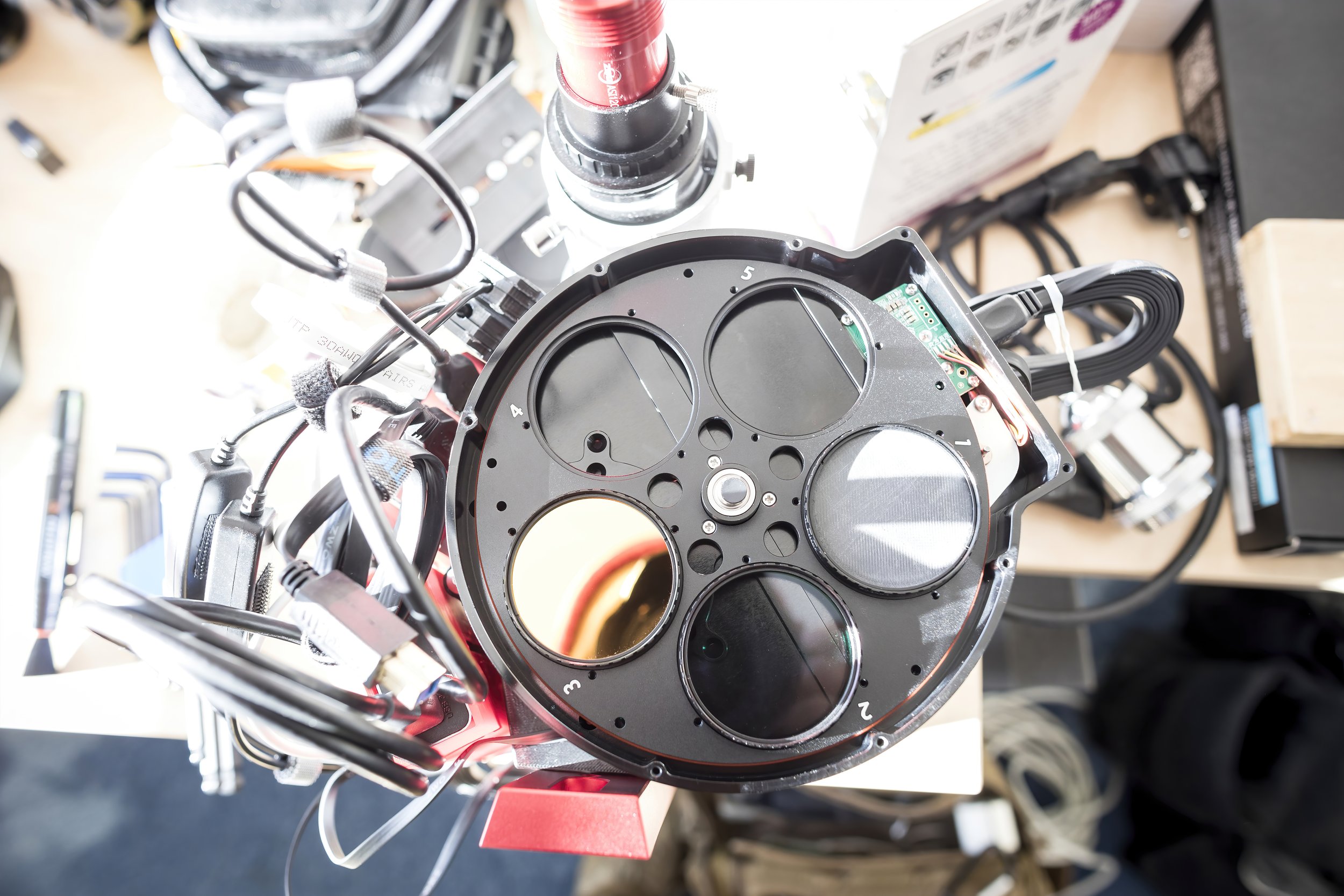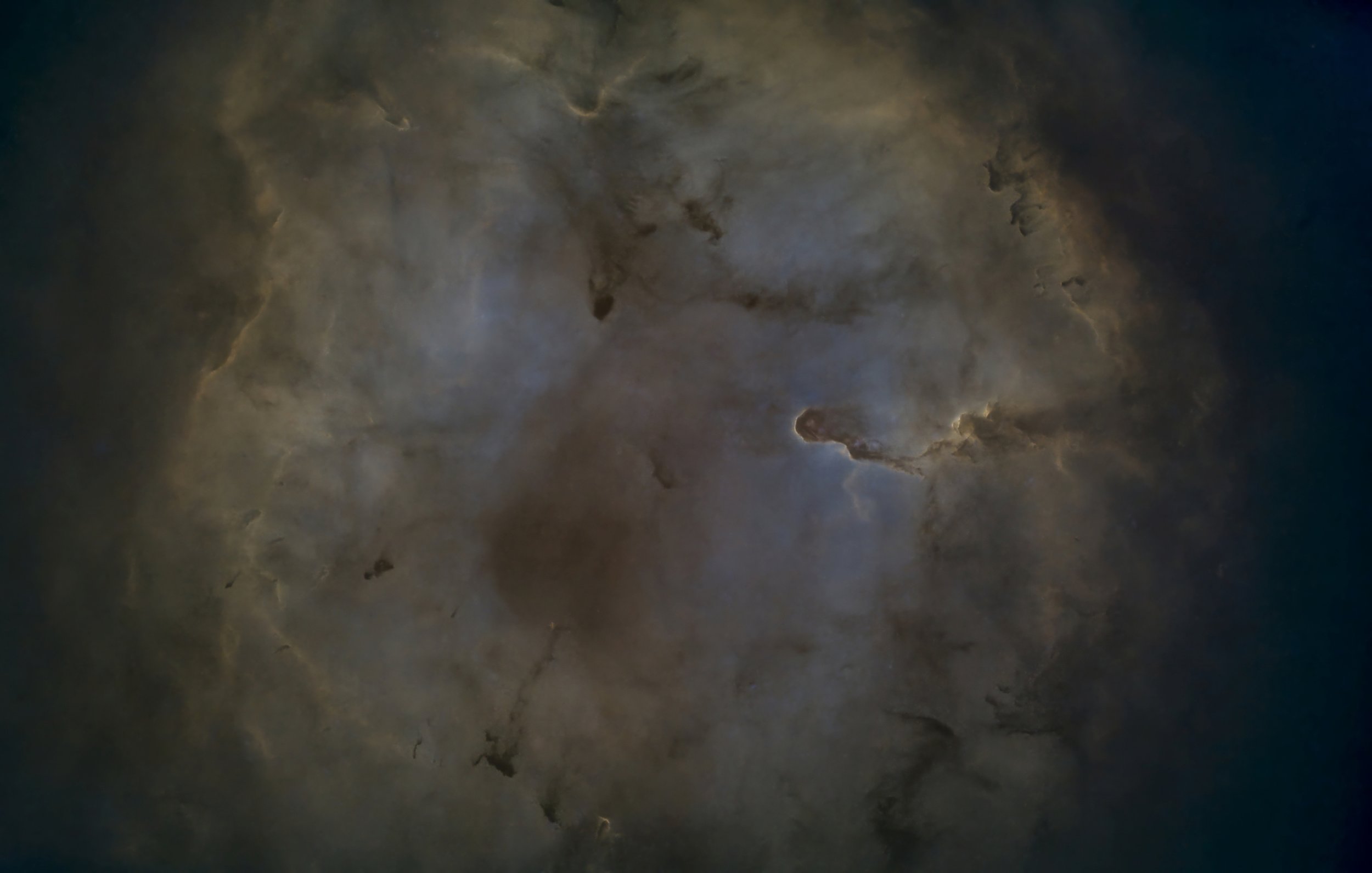As much as photographers have to be interested in the world around them, they should be interested in how the technology they use works. It is not your “art”, that moves you forward. It is your craft.

From left to righ: EOS 1n, EOS 1Ds Mark III, EOS R3. For a third time since my interest in photography begun, all basics of it changed almost completely. I started on film. Then digital arrived. Now I work with mirrorless system with no optical viewfinder.

IC 1805, stacked unprocessed H-Alpha data from two different sessions. Here you can see not only one of the most amateur mistakes you can make, but also technical problems like amp glow, not enough data, noise caused by hot sensor.

Mirrorless EOS R viewed in FLIR after an hour of work in 19°. Temperature is important. The cooler the sensor, the lower the noise.

Invested in astronomy, you will have to learn a lot about wavelengths.

IC 1396. There should be millions of stars in this frame. FOV is wide as ten full Moons next to one another. But thanks to math and programming you can make stars disappear with a click of the button. I can't stop looking at this. This is how the universe looked like before the first generation of stars. Except the blue color of course.

